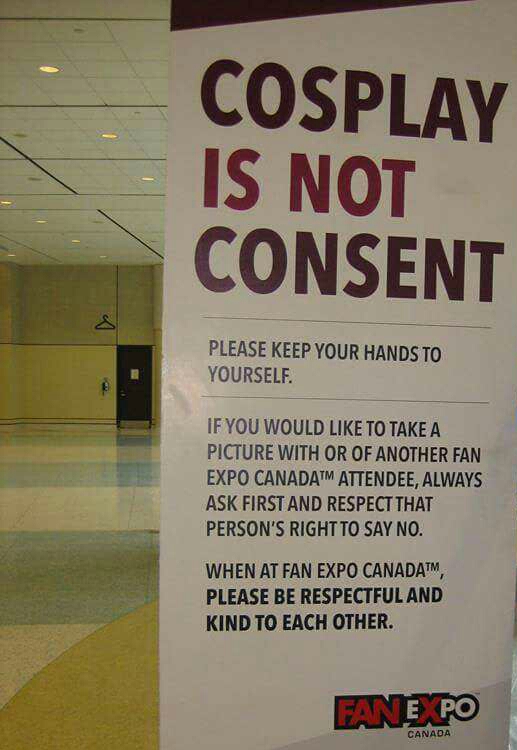Every year I make it a habit to attend Fan Expo in Toronto – it’s now the third-largest comic and scifi and horror and gaming convention in North America, after San Diego Comic Con International and New York Comic Con – and it’s always a blast. The organizers have made real efforts to prevent the con from becoming too unwieldy or unfriendly to fans (always a danger) and the guests and programming have been consistently top-notch. In 2016, Fan Expo brought us what’s purported to be Stan Lee’s final Canadian public appearance, and I can honestly say that sitting in that hall with him and hundreds of other fans, watching him and hearing him talk about his creations and his experiences in comics over the past 77 years (!!) nearly brought a tear to my jaded, robotic eye (that would be the left one; the right one is still fully biological). The room was so full of love for that man – looking great for 93 years old, by the way, voice still strong as spider’s silk and mind still sharp as Adamantium claws (okay, he didn’t create Wolverine but you get the idea) – that it was practically palpable. A friend of mine splurged on the photo op with Stan so that her superhero-obsessed six-year-old son could meet him, and so she could personally thank the man for creating the Hulk in particular, a character with whom her kid strongly identifies and who has helped him understand that just because you get angry sometimes it doesn’t make you a bad person.
I walked into that hall feeling like I had always already known Stan Lee, and I walked out feeling like I knew those other thousand fans too – when we all stood and applauded for the guy who co-created, let’s face it, an enormous percentage of the contemporary culture that we live inside and participate in, each of us knew that all the others were feeling the same feelings about the same person, even if we all had our very different individual experiences with his characters. It was an uplifting, if bittersweet, experience.
Then I went to the bathroom and peed at a urinal next to a guy dressed up like Captain America.
It got me thinking about cosplay. I’m not a cosplayer myself, but mostly for reasons of lack of craftsmanship skills and pure, old fashioned laziness; I really admire all the people I see every year at the Expo who have put their time, effort, and talent into making these often incredibly elaborate and strikingly accurate outfits. A lot of Fan Expo’s programming is devoted to the art and craft of cosplay – everything from Q&A sessions with with famous cosplayers like Lee Scion, Yaya Han, and others; workshops detailing how to build convincing and effective armor and weaponry for your costume, either by hand or using 3D printing techniques; the cosplay craftsmanship awards ceremony; and even a “Cosplay Recovery Lounge” to chill out in when you’re tired of being gawked at and asked for pictures. Hopefully only gawked at and asked for pictures.

This Captain America guy, though, was really something. He almost could have been Cap himself. He didn’t look too much like Chris Evans, but he looked like Captain America: he seemed tall and broad in the right ways (or that could have just been me feeling particularly short and scrawny beside him – maybe next year I should dress as Steve Rogers pre-supersoldier serum), he had the right haircut and the costume was authentic as could be. Of course this wasn’t the real Captain America – because there is no real Captain America, obviously – and yet it felt to me as if it might as well have been; in a strange way I had a similar sense of familiarity with this person as I had with Stan Lee and that whole room full of fans, costumed and not, just a few minutes earlier. It was as if I knew him, or at least that I knew a lot about him. Because I know who Captain America is, what he believes in and what he has accomplished, it also seemed like I knew this person who had chosen to identify himself not only with that character but as him.
That recognition kind of unlocked something about why cosplay is so compelling – why it’s so much fun for those who do it, why even those of us who don’t dress up want to take pictures of and with the people who do, and why we feel a sense of almost telepathic camaraderie and affiliation with cosplayers of our favorite fandoms even beyond what we tend to feel toward those who simply share our affection for Firefly or Adventure Time or whatever. It gets at something rooted deep in our psychology that tracks back to the most primordial architecture of the human mind.
Have I got your attention?
Okay, so here is the weird thing about consciousness (well, one of the weird things about consciousness, since we pretty much don’t understand absolutely anything about it): it’s impossible to prove that anybody else has it. This is what’s known as its epistemic asymmetry: that is, the contents of consciousness are directly available only to the subject that’s having that particular experience of consciousness. Most other qualities in the universe that we know of are epistemically symmetrical – anyone is free to observe them, and everyone using similar sensory apparatus will get the same information about that quality. For instance, if you want to measure the length of a hockey rink, any number of people with any different kinds of measuring devices will all get the same number as long as they’re all using the same units of measure. It doesn’t matter if you’re using a yardstick or a tape measure or a laser or an inchworm, and it doesn’t matter if you’re fat or skinny or what country or even what planet you’re from. The information about the distance between the two ends of the ice is directly apprehensible to the senses and equally accessible to any observer, no one has privileged access to that piece of knowledge.
Consciousness isn’t like that. The qualities of consciousness are uniquely and inherently available to one single observer – namely, the person having the experience. Information about one’s own conscious experience is available not only instantly but automatically, as having knowledge of an experience is part of what we mean when we say that an experience is a conscious one in the first place. But knowledge of the contents of other people’s consciousness is only ever available indirectly – and sometimes it’s not available at all. It’s impossible ever to really know what another person is experiencing in the same sense as it’s possible to know the length or weight of a physical object. All we have is either taking the person’s word for it, or making judgments based on the physical expressions that are secondary products of the experience; if a person is in pain they might wince or yelp, and if they are happy they might smile, but a person is also capable of suffering completely in silence or of smiling while they’re actually dying inside, and there is no way of knowing what those internal experiences are like for them. Even measuring something like neural activity or blood flow to specific parts of the brain doesn’t help much. You may be able to use technology to detect that a person is in pain even if they don’t otherwise show it, but that is still only secondary information about the experience. Knowing that someone is in pain still doesn’t give you any primary information about the conscious state that the person is having. To contrast again with the ice-measuring example earlier, all that there is for a hockey rink to be, say, 200 feet long (standard NHL rink size) is that it takes up this particular amount of space. If you know that from this end to that end of the rink it’s 200 meters, you know everything that there is to know about the length of the rink – there are no “private” qualities about length that aren’t directly available to a physical measurement by anybody. But knowing everything that it’s possible to know about another person’s pain is a priori impossible. Even if you’re using the most advanced equipment to detect precisely what’s physically happening inside their brain while they’re having an ouchie, you still don’t (and can’t) have the same degree of knowledge about that experience that they have about it. Direct knowledge of the experience is asymmetrical; it only travels in one direction, the direction of the person having the experience.
That’s part of what Descartes’s famous cogito is about: he recognized this weirdness when he wrote about looking out his window at a bunch of people wearing hats and carrying umbrellas and being unable to determine with certainty that there were people inside of those bodies. Maybe they’re actually robots, Descartes said. Today we’d say, maybe they’re actually philosophical zombies: hypothetical beings that are physically and behaviorally identical to humans in every way, but which lack any semblance of consciousness. The asymmetry of consciousness makes it impossible to tell whether someone who appears to be a person is actually a person or a p-zombie. They look the same as regular people, they act the same as regular people, if you ask a p-zombie if it has conscious experiences it will tell you that it does, even though it doesn’t, and there isn’t any way you can know that it isn’t telling the truth. Kinda like communists.

I’ll get back to Captain America’s urine in a minute, I swear
The way that our minds evolved, in both the Darwinian and the like Piagetian senses, is that at some point we developed what’s called a theory of mind. We begin to assume that things in the world that are similar to us in certain external ways that we can directly observe are also similar to us internally – i.e. that they have conscious minds containing beliefs and desires which are causally related to their behavior according to logical, comprehensible rules. If I know that I yell and scream when I get angry, cry and stay in bed for days when I get sad, laugh when someone suggests I get therapy for those last two things, etc, then I will tend to assume that other objects in the world have those same corresponding internal states when they do the same external things, even though I can’t ever directly apprehend those internal states. And the more similar that other object is to us, the more closely we’re able to empathize with it – what we’re doing is more or less running a simulation of that person inside our own mind in order to predict with as much accuracy as possible the causal chain of events that the person is going through.
When a person’s theory of mind is too exclusive, it can lead to failures of empathy that may manifest in sexism or racism or any number of other dehumanizing prejudices (“such-and-such a group is too dissimilar from me for me to recognize that they are also real people with subjective experience just like I have”); when it’s too inclusive it can lead to anthropomorphization of things that really have no business being anthropomorphized, which can become problematic if it proceeds beyond the metaphorical sense.
IKEA knows what’s up.
Descartes himself believed that only humans possess true consciousness and all non-human animals were just sophisticated machines, capable of behaving as if they were having internal experiences but in fact as empty inside as Sauron’s mailbox on Valentine’s Day. On the opposite side of the spectrum, contemporary philosopher Peter Singer holds that all living beings have the same capacity for experiencing suffering, and so prioritizing humans above, say, rats, is just as immoral as – if not more immoral than – prioritizing the rights of one human ethnic group over another. I hope we can all agree that both of these positions are nutso. Descartes’ justifies vivisection and other forms of what we would today call animal cruelty, while Singer’s implies that Colonel Sanders was worse than Hitler, Stalin, Mao, and Roger Waters put together.
Most people operate on a theory of mind somewhere between these two extremes. Certain conditions such as autism, schizophrenia, and even alcoholism, have been shown to inhibit a person’s capacity to effectively apply theory of mind to others. But theory of mind is so important that it has been posited as the single most significant factor in humans’ evolutionary advantage over other animals and even perhaps over other species of the genus homo who couldn’t hack it and ended up extinct (modern humans live and work in much larger groups than, for instance, Neanderthals did, maybe because we can conceptualize the motives and expectations of others on a level exponentially greater than they could).
The most powerful technology ever created for the construction of theory of mind, for what makes humans human, both on the micro level (cognitive development in children) and the macro level (species-wide neuropychological evolution) seems to be this: stories. Engaging with stories allows the human mind to “try on” the consciousness of people who are probably similar to them in some ways, but may also be dramatically different from them in others. We now know that reading novels increases empathy, and it’s not too much of a stretch to hypothesize that it was the development of writing (and therefore the ability to tell the same stories, in the same words, to people separated by hundreds of miles or hundreds of years, for the first time ever) that caused the human mind to evolve into the unfathomably sophisticated engine of meaning that is our plug-and-play, right-out-of-the-box birthright; despite all our genetic and cultural diversity, this is our common cognitive heritage. We can get into anyone’s head, real or fictional, be they the first man and woman in a garden of delight, the tragically arrogant dictator of one history’s most influential civilizations, or a guy who dresses like a bat and fights crime to avenge the murder of his parents.
Cosplay is actually a highly sophisticated form of storytelling.
What cosplay does is allow you to walk into an exhibition hall with thirty thousand other people and rather than perceiving them as anonymous indistinguishable masses of mobile flesh preventing you from seeing more than a couple feet in front of you, you instantly know something about them that humanizes them to you. This guy is dressed like Captain America, and that communicates a hell of a lot of information, because you are already familiar with Captain America; you know that the person who has chosen to dress as that character rather than some other character holds certain values with which he wants to be identified. It’s related to wearing a band t-shirt or sports jersey or even religious or traditional clothing that signifies belonging to a specific group – but it’s a lot more personalized than any of those. It isn’t simply a declaration of affiliation, but a kind of narrative performance that broadcasts silently, in a 360-degree radius, which stories he wants people to be thinking about when they interact with him. Our choice of clothing communicates a lot, but always alongside assumptions about the person based on ideas – either informed or not, positive or negative – about the characteristics of the group with which those dressing conventions are associated. “That dude’s a Jew, that girl’s a goth, this guy’s a Maple Leafs fan, this lady loves Aerosmith,” and so on. Depending on how you feel about those various subcultures you’re going to have very different ideas about what the person might actually be like.
But dressing as a character is different. A cosplayer is symbolically associating her or himself with a particular individual (or at least a type of individual who can be safely stereotyped in a way that actual humans can’t – or at least shouldn’t – be, for instance dressing as a generic Klingon or Storm Trooper). The stories about that character are implicit in the costume. Even if you aren’t meant to interact with the person as if they were really that character, you still have an enormous amount of information about the kinds of qualities and attributes that the cosplayer values, and what she wants people to think about when they see her.
Cosplay generates a kind of omnidirectional “theory of mind field” that shortcuts a lot of the processing that your brain normally has to do in order to simulate another person’s subjective experience, understand their perspective (or understand that they even have a perspective), reasonably predict their behavior, and figure out the best way to interact with them. We don’t necessarily notice that we’re doing all that work, because we learned it as toddlers and it’s become an automated and largely unconscious process for most of us; but it’s one of those processes that runs in the background while using a huge amount of RAM, and sometimes it can slow down the system so much that you have to ctrl-alt-del out of it for a while (I’m looking at you, iCloud Services), and that’s when bad, selfish, antisocial, and even violent things can happen.
Like reading fiction, cosplay helps exercise and strengthen the empathetic response. It allows us to recognize perfect strangers as if we already know them, because in a sense we do, and put ourselves into their frame of reference rather than alienating ourselves from them. In this way, Fan Expo and other conventions where cosplayers congregate, have actually done a lot of good for the advancement of prosocial behavior, the acceptance of diversity, and – dare I say it – the spiritual evolution of our species.
Also it’s fun.


Add a Comment